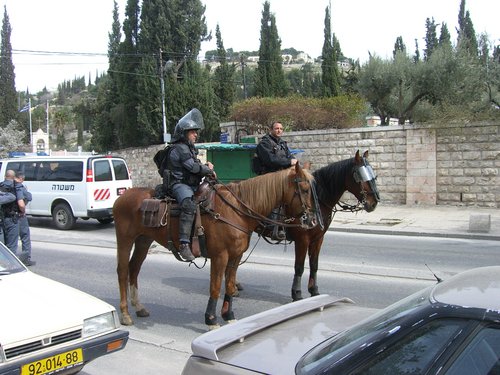THE FOLLOW-UPUsually, it is recommended that the owner brings the horse for treatment at least three days before the horse is scheduled to work. But of course, there is no question of leaving the horse in its box during this time, especially if it is at a high level of training and physical strength, and needs to spend its energy. The movement of the horse must be strictly controlled: it will therefore not be put to the paddock where he could to "explode". We must limit exercise to a walk, collected trot or controlled canter, on a route as straight as possible, without any sharp movements, leaving the horse to go quietly, moving completely forward ... The duration of this session will depend on the level of fitness of the horse: if a horse is in the midst of competition, this "health walk" may very well represent ten kilometers of trotting ... Essentially continue exercising but not working.
Similarly, in case of large blockage of temporo mandibular joint, avoid putting a bit in the horse’s mouth during these three days: longe and halter or cavesson; if the horse need to be riden, use a hackamore . If the disease is treated in connection with a dental problem, it may be necessary to wait before using a bit until the condition is corrected by dentistry. On the fourth day, it is considered that the horse can return to "work" itself, even if everything goes well, the competition. Why this protocol? It should be understood that handling a horse, it changes the perception he has of his body (his body scheme), through its brain (more specifically the neuro-vegetative nervous system ). The latter requires some time to find its bearings: a few minutes, hours or sometimes days ... As long as there is a disharmony between what the body "is" and what the brain recognizes", the horse does not make a reckless effort (eg romp free in the paddock). This phase of disharmony is a source of healing. Until the information "amortized" and that the body is fully integrated, there is a period of weakness that must be respected. The complementary: any long installed dysfunction causes changes in local tissue muscles, fascia, joints and ligaments. Many physiotherapy treatments facilitate healing, a return to an optimal tissue quality and thus the disappearance of residual pain and inflammation. These are massage, electrotherapy, ultrasound, hydrotherapy, local friction ... depending on the indications of the osteopath. Similarly, a specific muscle work will be indicated to correct postural patterns sometimes prescribed for months. (with the rider too!) When to review the horse?: The answer is difficult, not when the horse wants, but when discreet symptoms recur, in other words as soon as possible! otherwise, before an important deadline, or acupuncture, any change of season. |
